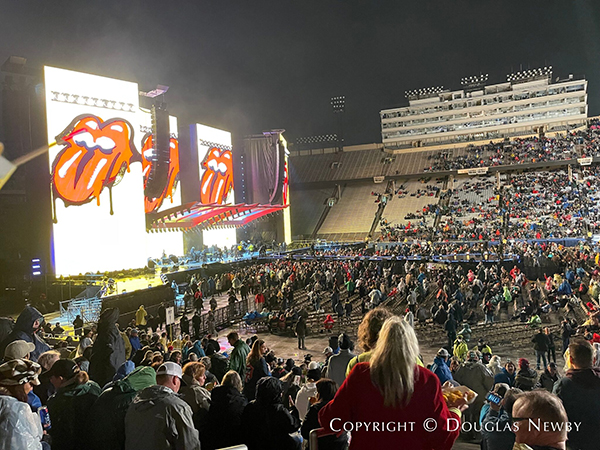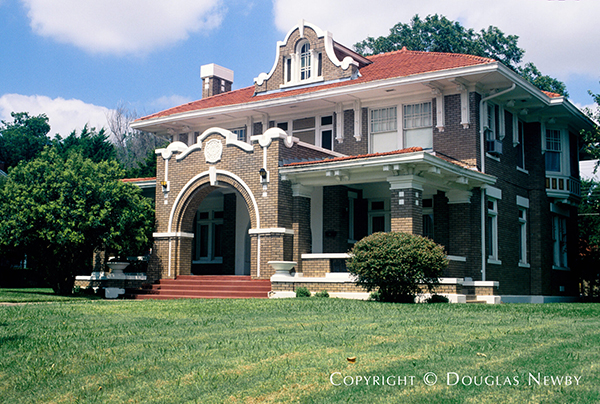
Recently, exciting plans for Fair Park were unveiled at an architectural forum by Fair Park First, the nonprofit selected to transform and manage Fair Park’s transformation.
The elements of the proposed transformation are ambitious and have great potential for Fair Park, the surrounding neighborhoods and Dallas. But, will this be a boon for the surrounding neighborhoods — or the beginning of their end? The big question: will Dallas’ Fair Park transformation reinvigorate the surrounding single-family home neighborhoods or by attracting massive development next to Fair Park, wipe out surrounding historically black single-family home neighborhoods and some of the city's iconic architecture.
The team assembled for Fair Park First is comprised of many of Dallas’ most talented and brightest architects, including Overland Partners and Perkins & Will, contractors, and community leaders. Those involved in Fair Park First have received decades of professional and civic honors for their professional skills and contributions to the community.
Currently, one admires the Art Deco-designed Cotton Bowl and enjoys ascending the terrace steps to the entrance of the Cotton Bowl, to then be faced with what looks and feels like a mechanical basement. Katie Miles presented the rendering of the new Cotton Bowl interior that shows how the Fair Park Art Deco aesthetic will permeate the interior experience, along with incorporating the technology that relates to new ways people interact with sports and other events. This will be a 21st century stadium that will have the largest capacity for international soccer matches and other huge events.

Whenever the Rolling Stones come to Dallas they play in the Cotton Bowl to sold-out crowds.
The legendary Art Deco bandshell, former home of the Dallas Shakespeare Festival, often starring actor T.A. Taylor, will also be transformed. Inspired by the bandshell Art Deco design, its seating will have a curved shade and rain canopy, making this venue much more attractive for a new calendar of events.
What can go wrong? Particularly perplexing may be the future of the single-family home neighborhoods surrounding Fair Park.
Question to Fair Park First
Is Fair Park First advocating for the preservation of Fair Park neighborhood single-family homes or the building of new single-family homes in the surrounding neighborhoods of Fair Park?

Most Fair Park neighborhood single-family homes are modest in size – those in the South Boulevard – Park Row Historic District are majestic.
Fair Park First — Answer
Fair Park first stated no one expressed interest in future single-family neighborhood homes. Fair Park First leadership explained they had not heard from a single person or group in any of the Fair Park neighborhoods express that they wanted single-family homes preserved or built in their Fair Park neighborhoods. I have no reason to doubt that in 200 meetings of people from 23 Fair Park neighborhoods no one mentioned a desire to preserve their single-family home neighborhoods. They might not have thought their single-family homes were in jeopardy, or they might have hoped the development would lead investors to come in and buy their property at a fantastically high price, or maybe it didn’t come up since the conversation was solely on what would go in the Fair Park campus. However, it is interesting that this topic was not brought up, failing to anticipate how the project will affect the 23 surrounding Fair Park neighborhoods.
Here are three potential outcomes for the surrounding neighborhoods:
- Single-family home neighborhoods are preserved, renovated, and the city invests in new curbs, sidewalks, parkways, trees, good infrastructure, and fast internet connections consistent with Preston Hollow, Greenway Parks, and Highland Park that make these neighborhoods increasingly attractive to current homeowners and new homebuyers.
- The city of Dallas, like it has in other southern Dallas neighborhoods, blue-lines the area, designating it for city, state, and federal funds to subsidize the purchase of land and construction of new low-income tax credit apartments and new developer-subsidized mixed income apartments.
- After the $500 million is spent on the transformation of Fair Park, it becomes an international event destination, spurring developers and investors to buy up land to develop high-rise offices and high-rise residences near all the activities generated at Fair Park.
If the city decided to invest millions of dollars into the neighborhood infrastructure and physical amenities rather than subsidize developers to build more apartments, the Fair Park single-family neighborhoods could enjoy a wave of single-family home renovations and new homes in-filling the vacant lots. Flourishing single-family home neighborhoods would give a lovely backdrop to the vitality of Fair Park. This outcome, however, is apparently very unlikely if there is no proactive plan to advocate for and to enhance the single-family home neighborhoods or preserve and build new single-family homes in the Fair Park neighborhoods.
But the Fair Park First leadership seems more enthusiastic about a new apartment development as being built in one of the Fair Park neighborhoods. Like many, they described this new apartment development as “mixed income,” as if this is a moral magic dust to sprinkle over neighborhoods to justify single-family homes to be torn down or vacant land to be devoted to more subsidized density. This is the most likely but worst potential outcome for Fair Park neighborhoods. In a neighborhood with too much affordable housing, the neighborhood really needs more single-family homes. Low income and mixed income apartments, developers and civic leaders argue, will provide more affordable housing. In fact, each one of these new apartment units cost more to build per square foot than it costs to build or renovate a single-family home per square foot. This sort of development does not offer the charm or safety that will be attractive to visitors from nearby Highland Park (For that matter, mass apartments also will not be attractive to national or international visitors to Fair Park).
Rather Than Genuflect to the Density Playbook, Dallasites Should Anticipate that Fair Park First Will Generate a 21st Century Urban Renewal, Tearing out the Surrounding Neighborhoods
Urban renewal over the last 100 years has come in many forms. Roads have been built through minority neighborhoods. Liberal reformers have said the housing conditions of minority-owned homes are not up to their standards and need to be demolished so new government housing can be built. The government has given developers the money to buy inexpensive homes if they will tear them down and build new affordable or mixed-use housing. The city and HUD have guaranteed that they will buy back the land acquisition cost and apartments if the new development replacing inexpensive rundown houses is not successful. This is a newer type of urban renewal. Invest in a neighborhood and developers will come. Aaron M. Renn wrote in New Geography.com an article titled “Why Many Poor Neighborhoods Fear Development” Renn was surprised the first time he heard about activists in poor communities opposing investment in their parks. They were worried about displacement or inequity in what they call “green gentrification.” Fair Park First could turn out to be the ultimate green gentrification – investment in parks that generates displacement of the existing neighborhood residents.
If a relatively lackluster American Airlines Arena could generate high-rise development in a quasi-entertainment district on land that is already expensive, imagine what the development of a true international destination would attract with the cheapest land around it. How could Fair Park single-family homes possibly compete with an international investment appetite for the hottest new entertainment district west of Miami and east of Las Vegas?
There need to be advocates for Fair Park single-family home neighborhoods if the neighborhoods have any chance for survival. Maybe these advocates for the existing single-family neighborhoods around Fair Park are already out there. If so, these people need to make themselves known to Fair Park First and Dallas.
Organic Urbanism treats a city or a neighborhood more like a garden than a tough urban environment that can be manipulated or legislated to conform to a planner’s wishes. Just like a garden might have tall trees, understory trees, sun-loving plants, sun-loving flowers, shade-loving plants, or groomed lawns that evolve, cities or neighborhoods can have a wide range of uses that evolve. Just as gardens grow, decay and are rejuvenated, the same can happen to neighborhoods. It is exciting that Fair Park First has such an exciting plan to transform and rejuvenate Fair Park.
But if the leadership of Fair Park First and the city management continues to subsidize developers to build apartments, rather than invest in the infrastructure of the neighborhoods, Dallas will experience the blandest urban renewal possible around Fair Park. If the city does not spend money on the infrastructure and the beautification of Fair Park like they do in North Dallas or even East Dallas neighborhoods, then the Fair Park single-family homes will be renovated and preserved. The effort now should focus to combine single-family home preservation, new single-family homes, and the highest quality development to surround Fair Park.
Douglas Newby is a national award-wining real estate broker who writes about real estate, cities, architecture and Organic Urbansim. He gave the TEDx Talk Homes That Make Us Happy. You can read more about him and his work on his website Architecturally SignificantHomes: DougNewby.com and on his blog DouglasNewby.com.
Lead photo: The Art Deco design of the Fair Park buildings and art murals have captured imaginations for over 50 years. The modern Art Deco architecture in Fair Park is perfect in Dallas known for its modern homes, by author.












